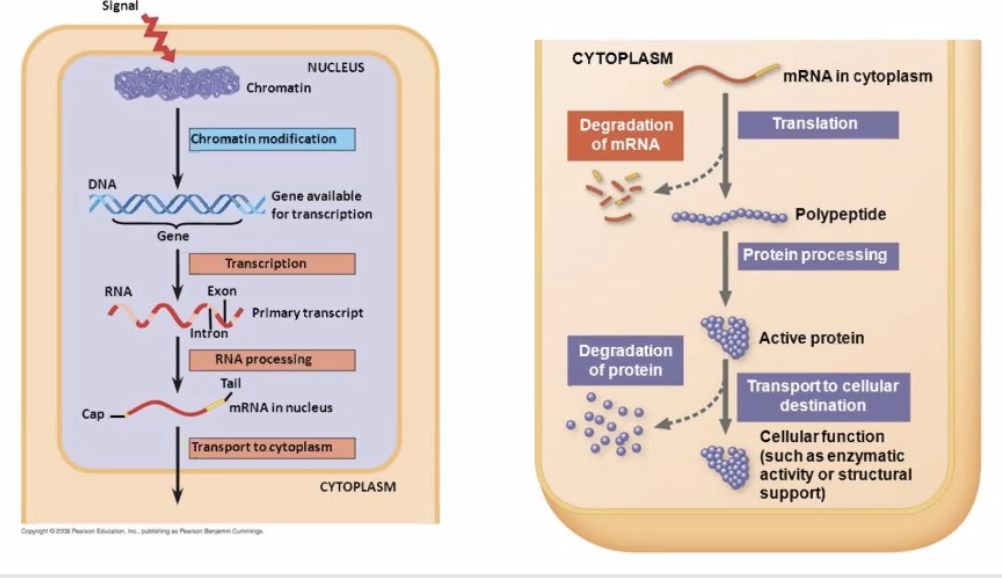Backlinks
1 Central Dogma
Central dogma is the concept that the instructions of protein synthesis comes from the DNA, and that DNA creates RNA creates Protein, RNA creates RNA, DNA creates DNA, but this flow path could not be reversed.
We know a little bit more about central dogma now, and now have more concise operations for the processes defined in the central dogma, namely…
- DNA Polymerase takes DNA and makes more DNA
- Duplicates cell DNA
- Could be hijacked during cell cycle to duplicate DNA viruses
- DNA viruses may also carry their DNA Polymerease to not wait for the cell cycle
- RNA Polymerease takes DNA and makes mRNA
- Have lower fidelity with an error about 1/100,000
- Hence why safety mechanism needed
1.1 Protein Synthesis
Eukarotic gene expression is regulated at many stages because mRNA is pretty error-prone and so there needs to be many different steps

Figure 1: preprocessing.png
1.2 DNA Replication
1.3 RNA Replication
1.4 List of Kool Proteins
| Name | Function |
|---|---|
| RNA Polymerase | transcripts: takes DNA and turns into mRNA |
| DNA Polymerase | replicates: takes DNA and makes more copy of it |
| RNA-Dependent RNA Polymerase | replicates: takes RNA and makes more copy of it. Basically only viruses use it. |
| Promoter | signals: DNA signal of the start of the DNA. |
| Terminator | signals: DNA signal of the end of the DNA. |
2 Central Dogma in a Paragraph
The "silly" explanation of the Central Dogma that's a bit problematic is the phrase "DNA" informs "RNA" informs "Proteins". But of course the enviromental variablity, mutatability, and the surprising lack of permanence of all parts of this system makes this not entirely fully accurate.
DNA could of course replicate, that's how one makes new cells. But in addition to this, during the process of transcription, there are also enviromental variations to the performance of promoters, etc.